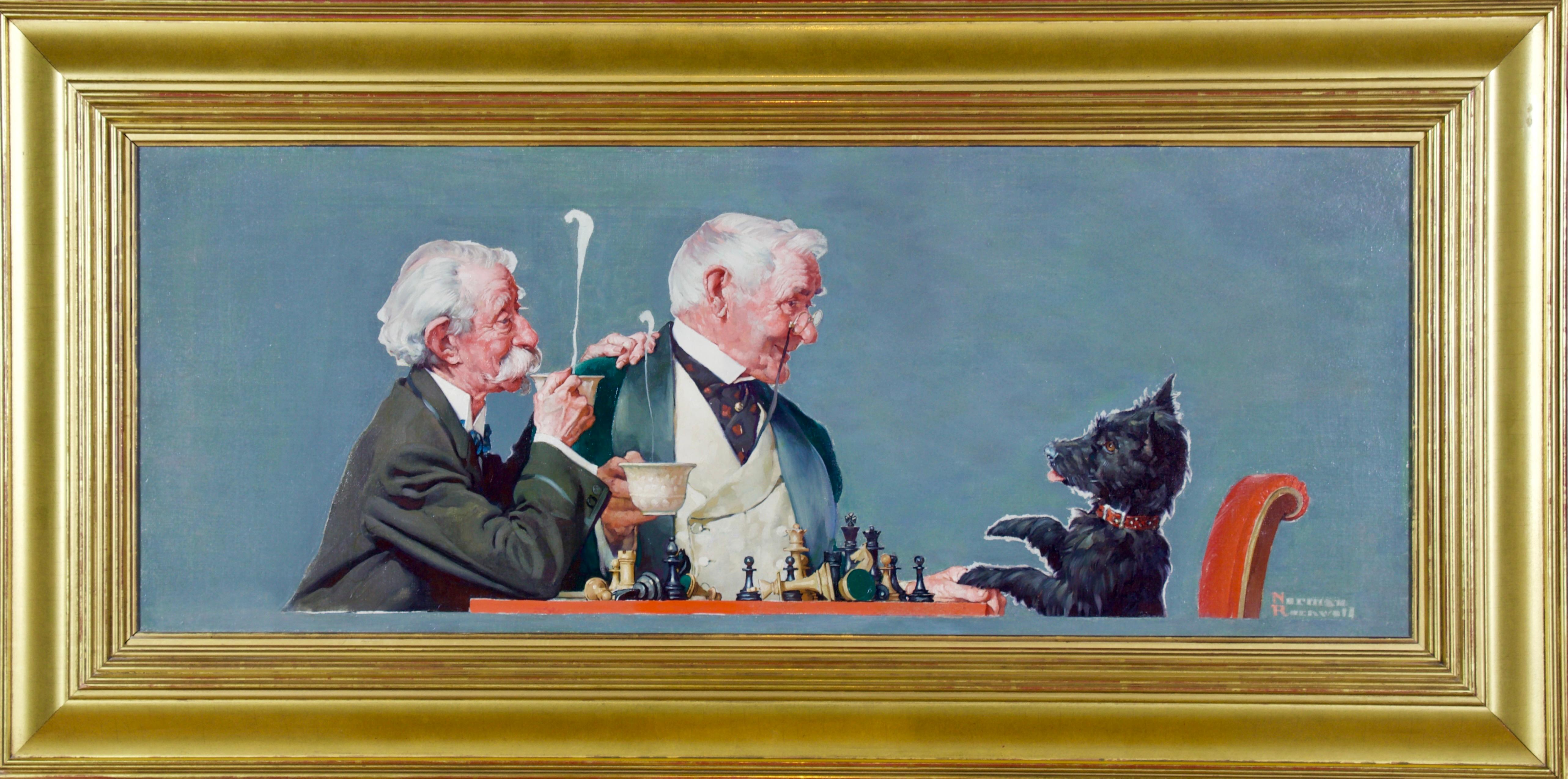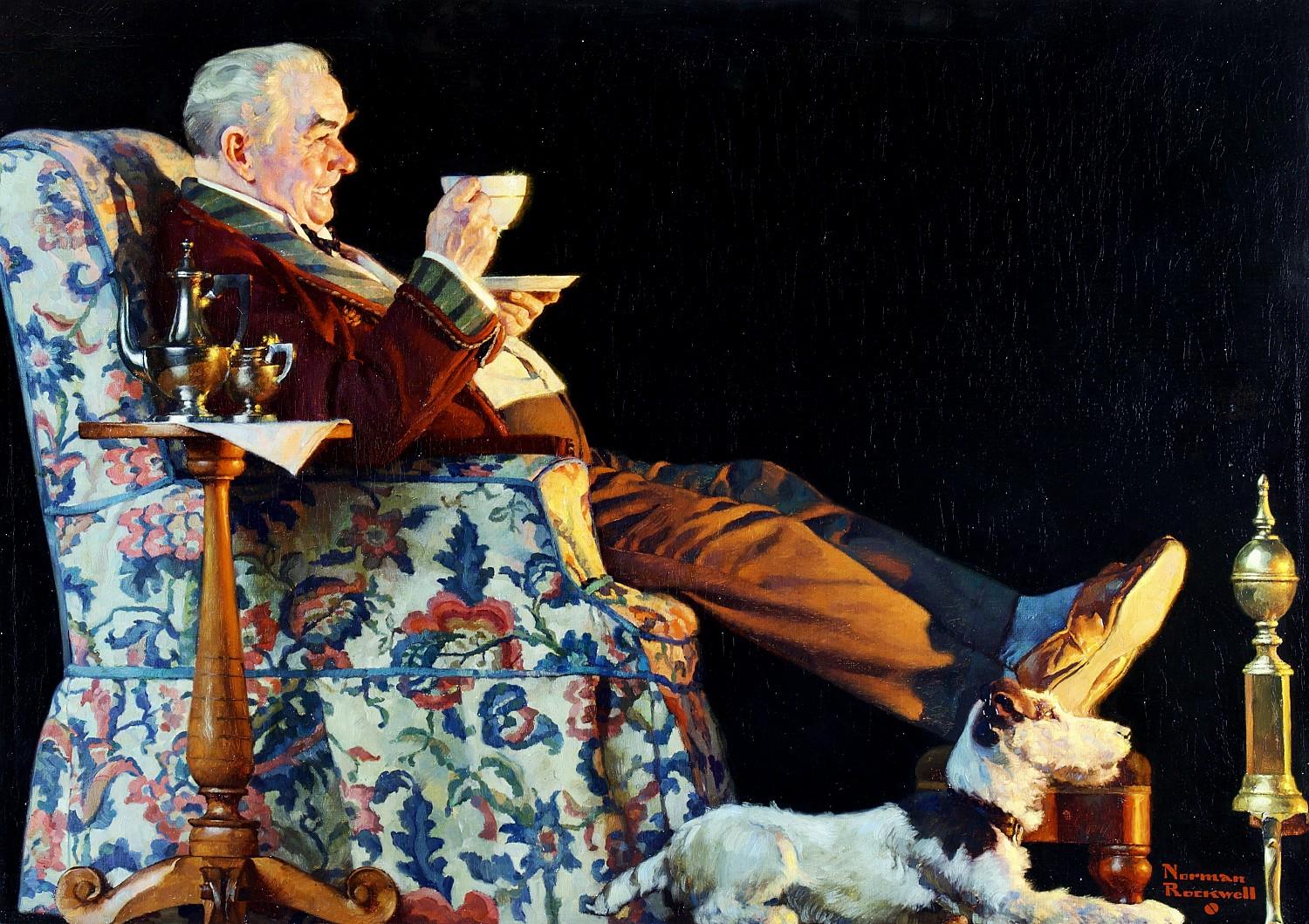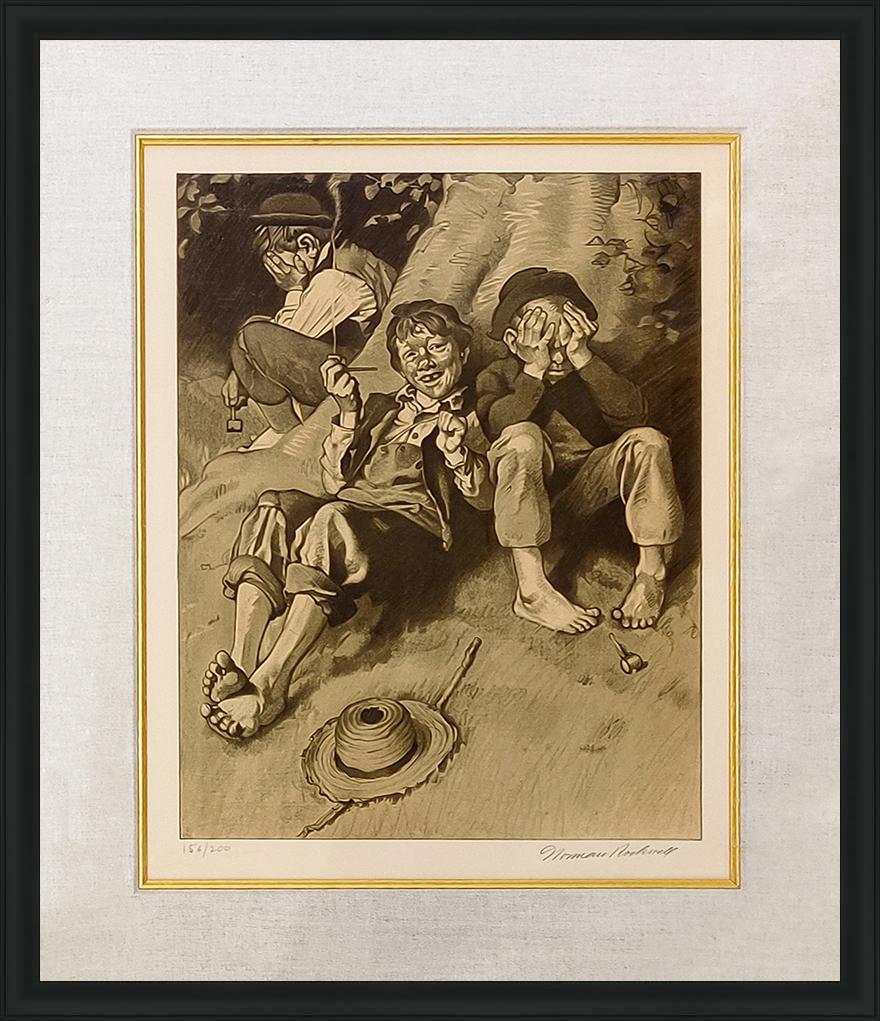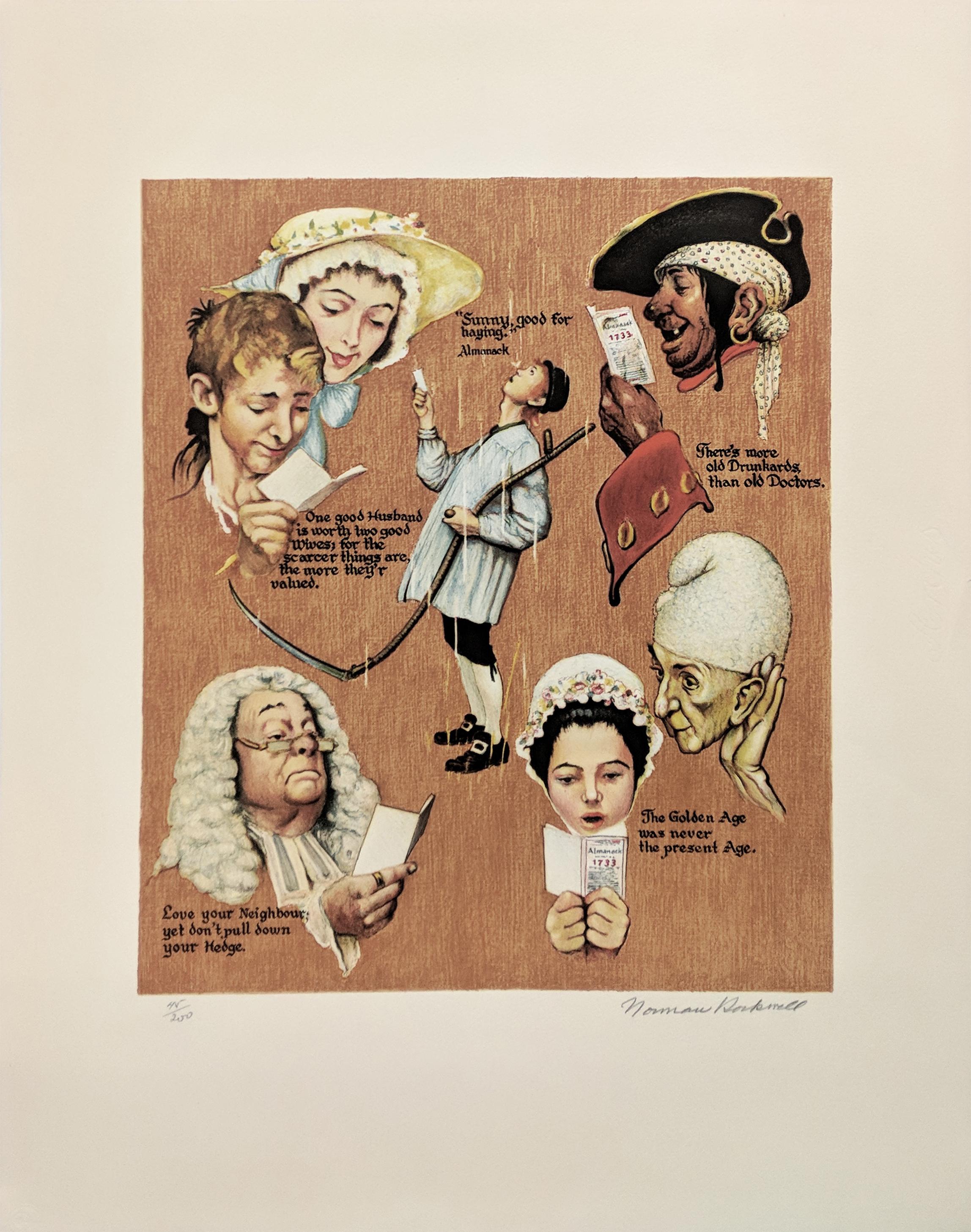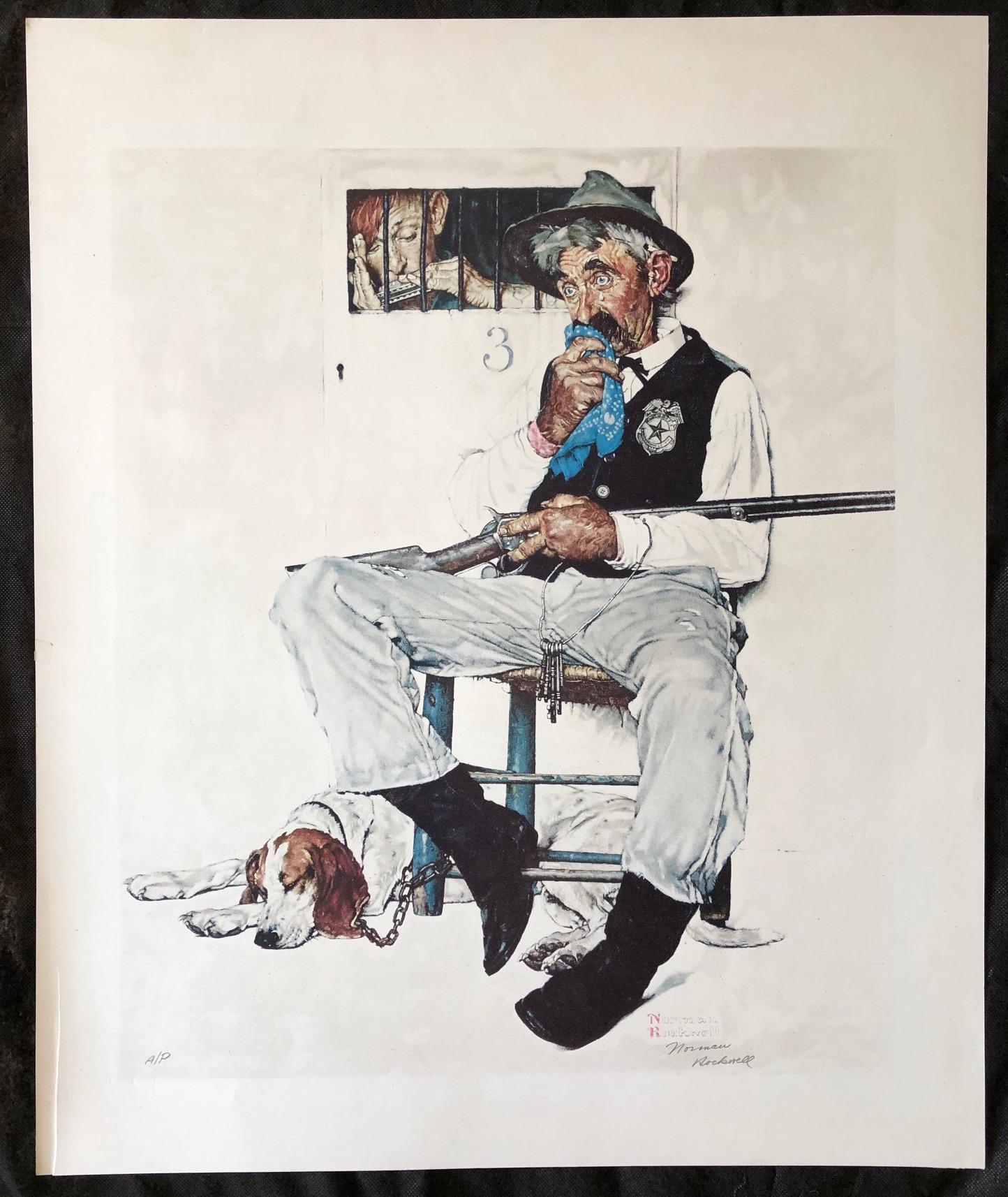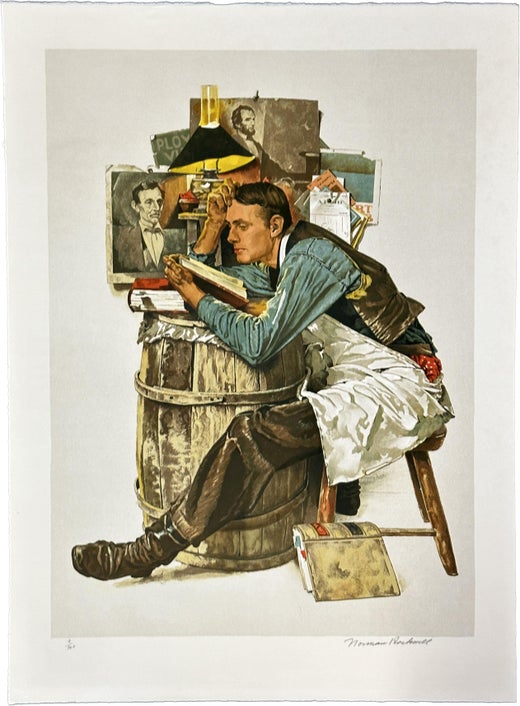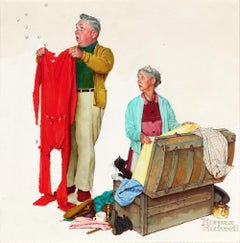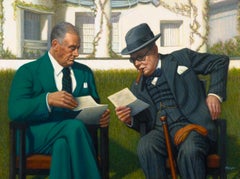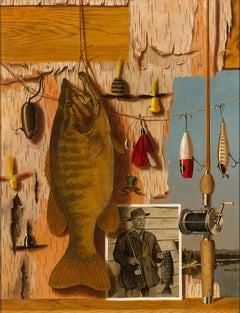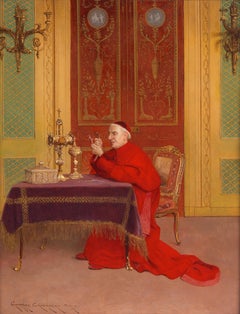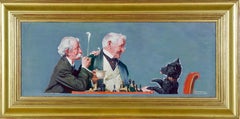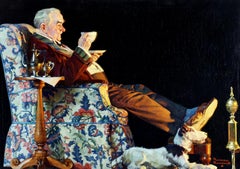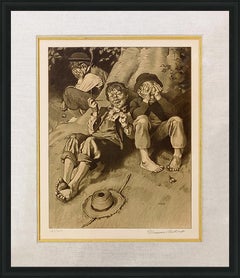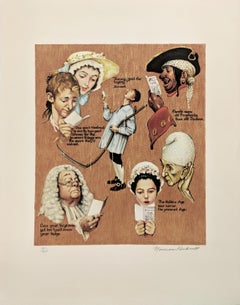Norman RockwellBlackstone CigarsCirca 1921
Circa 1921
About the Item
- Creator:Norman Rockwell (1894 - 1978, American)
- Creation Year:Circa 1921
- Dimensions:Height: 22.88 in (58.12 cm)Width: 43 in (109.22 cm)
- Medium:
- Period:
- Condition:
- Gallery Location:New Orleans, LA
- Reference Number:Seller: 31-37821stDibs: LU1868771162
Norman Rockwell
Norman Rockwell is among the most revered painters of the 20th century. His figurative and portrait paintings reflect an innocent and idyllic America described by the artist as "life as I would like it to be." For nearly 50 years, he illustrated the covers of The Saturday Evening Post in a rich and emotive style that gave distinctive personalities to his imagined characters. In total, Norman Rockwell created more than 4,000 works of art over the course of his life.
Rockwell was born in 1894 in New York City. His artistic aspirations took shape early on, and when he was 14 years old, he took classes at the New York School of the Art, which is now the Parsons School of Design. Later, he attended the Art Students League of New York, where he studied under influential painters Thomas Fogarty and George Bridgman. While still a teen, Rockwell became art director of the Boy Scouts of America publication Boys' Life.
At 21, Rockwell moved to New Rochelle, New York, and opened a studio with fellow illustrator Victor Clyde Forsythe. He created illustrations for magazines like Literary Digest and Life before his first cover for The Saturday Evening Post was published when he was 22. In 1939, after moving to Arlington, Vermont, Rockwell pivoted to making the nostalgic paintings of small-town and iconic America for which he is best known — scenes of Christmas dinner, children playing in the street and national treasures like Ruby Bridges and Rosie the Riveter.
In 1943, a speech previously given by President Franklin Roosevelt inspired Rockwell to create his most famous series, “The Four Freedoms,” which was exhibited all over the United States. The series included four pieces entitled Freedom of Speech, Freedom to Worship, Freedom from Want and Freedom from Fear.
Rockwell moved with his family to Stockbridge, Massachusetts, in 1953, where he spent the rest of his life. My Adventures as an Illustrator — the autobiography Rockwell wrote with the help of his son, Thomas — was published in 1960. In 1963, Rockwell ceased working with The Saturday Evening Post and started drawing illustrations for Look magazine.
The world’s largest collection of original Rockwell art can be found at the Norman Rockwell Museum in Stockbridge. The artist was awarded the Presidential Medal of Freedom in 1977, and he passed away peacefully in his home the following year.
On 1stDibs, find a collection of original Norman Rockwell paintings, prints, drawings and other works.
- ShippingRetrieving quote...Shipping from: New Orleans, LA
- Return Policy
More From This Seller
View All20th Century Figurative Paintings
Canvas, Oil
21st Century and Contemporary Figurative Paintings
Canvas, Oil
20th Century American Modern Still-life Paintings
Canvas, Oil
19th Century Academic Figurative Paintings
Oil, Panel
Early 20th Century Other Art Style Figurative Paintings
Canvas, Oil
19th Century Barbizon School Figurative Paintings
Canvas, Oil
You May Also Like
1920s Figurative Paintings
Oil
1920s American Realist Figurative Paintings
Canvas, Oil
1970s American Impressionist Portrait Prints
Paper, Lithograph
1970s American Impressionist Portrait Prints
Paper, Lithograph
1970s Naturalistic Portrait Prints
Lithograph
1920s Figurative Paintings
Oil
Read More
Paul Revere Crafted This Silver Coffee Pot 250 Years Ago
Perhaps best known as a Revolutionary War hero, Revere was also an accomplished silversmith, and this pot is now available on 1stDibs.
Degas Portrayed These Exuberant Ukrainian Dancers with ‘Orgies of Color’
Discovered in Parisian cabarets, the performers reenergized the artist’s practice.
